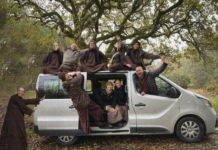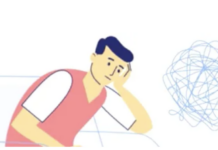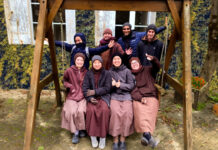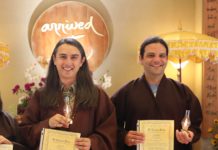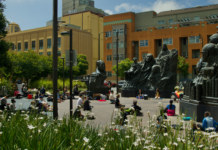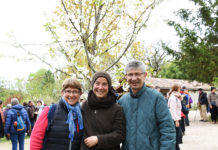By Monastic Sister Trang Uu Bat
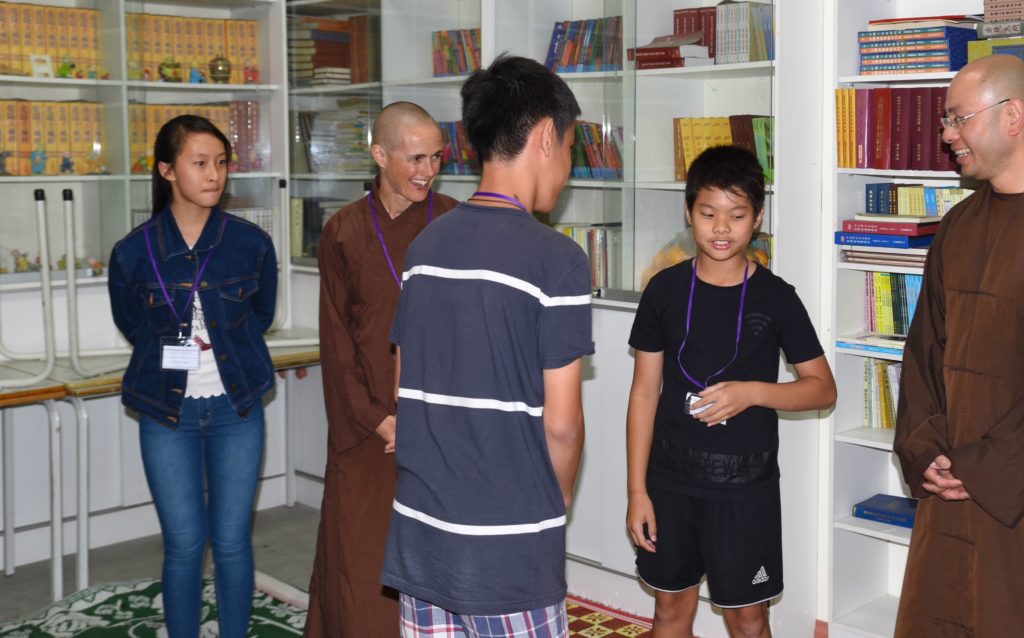
Having recently had the good fortune to tour Australia helping to support retreats with our Sangha, I appreciated how easy it was to stay focused on the Dharma and practice when immersed in the flow of the sangha river. Without any extra or sustained energy, thoughts and conversations naturally flourish around awakening and liberation.
Following the tour I have spent time with my family in what many would call mainstream daily life, which without a practice, could be quite overwhelming faced with endless advertisements coming at you from every direction and trying to sell the idea that one needs to have so many things to function and to be happy. One could easily feel pressured as that is what most of the people around us are pursuing. Without people around who know what our goals and aspirations are to support us, we can easily get swept away as we simply try to keep up with the pace of the world, which appears to be getting faster and faster.
So many times I have heard the recitation of taking refuge in the Triple Gem: the Buddha, the Dharma and the Sangha. To aspire to cultivate the qualities of loving kindness, compassion, joy and equanimity that the Buddha exemplified speaks to my heart. As an experiential learner, to be told to put the Dharma into practice for myself and accept only what I find to be true makes complete sense. But taking refuge in the Sangha, for someone who was raised to be self-sufficient and independent, has taken a lot more time for me to unpack and my understanding of what it means, true to form, is constantly changing.
When one spends time with the community, we can understand why we are asked to join or create our own Sangha in order to have support on the path. In this kind of environment, we are naturally supported to stay focused on the practice.
The goal to live in harmony and awareness as a community is also a practice. I can hear my teacher’s voice asking, ‘Live in harmony with who? Awareness of what?’ These are very good questions. Initially I spent a lot of time and energy trying to get to know the people I lived with, the kind habit energies they had inherited from their parents and cultures, the kind of life experiences had shaped them, the things brought them joy and their triggers. This is helpful in taking steps towards harmony, but not everybody has the same amount of time or interest to do that. The Sangha is constantly in a flow of change with people coming and going, making it a practice which needs sustained energy and enthusiasm.
Living in community, eating, working, studying, playing, sharing rooms and bathrooms together 24 hours a day, 365 days a year means that you can’t leave your problems at work. Rather you have to face them and more and more it becomes obvious to me that living in harmony with the sangha means to be able to live in harmony with myself.
Awareness means to be aware of my mind and in which direction it is leading me. Can I live in harmony with myself no matter what situation I am placed in? Can I only be happy when things go my way or can I find my equanimity in whatever situation arises? Am I aware when greed or desire arises in me and unsettles me, pushing my energy in the direction of samsara, constantly chasing things that do not bring lasting happiness? Am I aware when aversion arises in me and the resistance it causes in myself to things around me. How does my face look in those moments? Would it bring happiness to others?
Whilst far from perfect, I am aware that when I take the time to respond to life based on right view and thought which leads to more skilful speech, both around self judgements and my interactions with other. It creates an inner harmony and naturally fosters a more harmonious sangha environment around me.
On his passing, the Buddha asked us to take refuge in the Dharma and the island of oneself. When we return to ourselves, we become someone who can live in harmony and awareness and with these skills, we can take refuge in the Sangha. And so goes the interconnected web of all things.
Sister Trang Uu Bat originates from Australia, received full ordination as a bikshuni in 2013 and serves currently at Blue Cliff Monastery, in New York, USA.
Reprinted with permission from Nhap Luu Monastery’s Winter 2018 Newsletter


